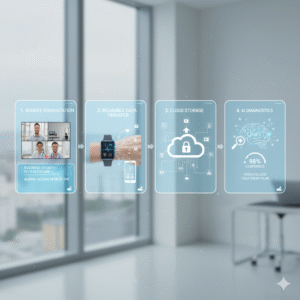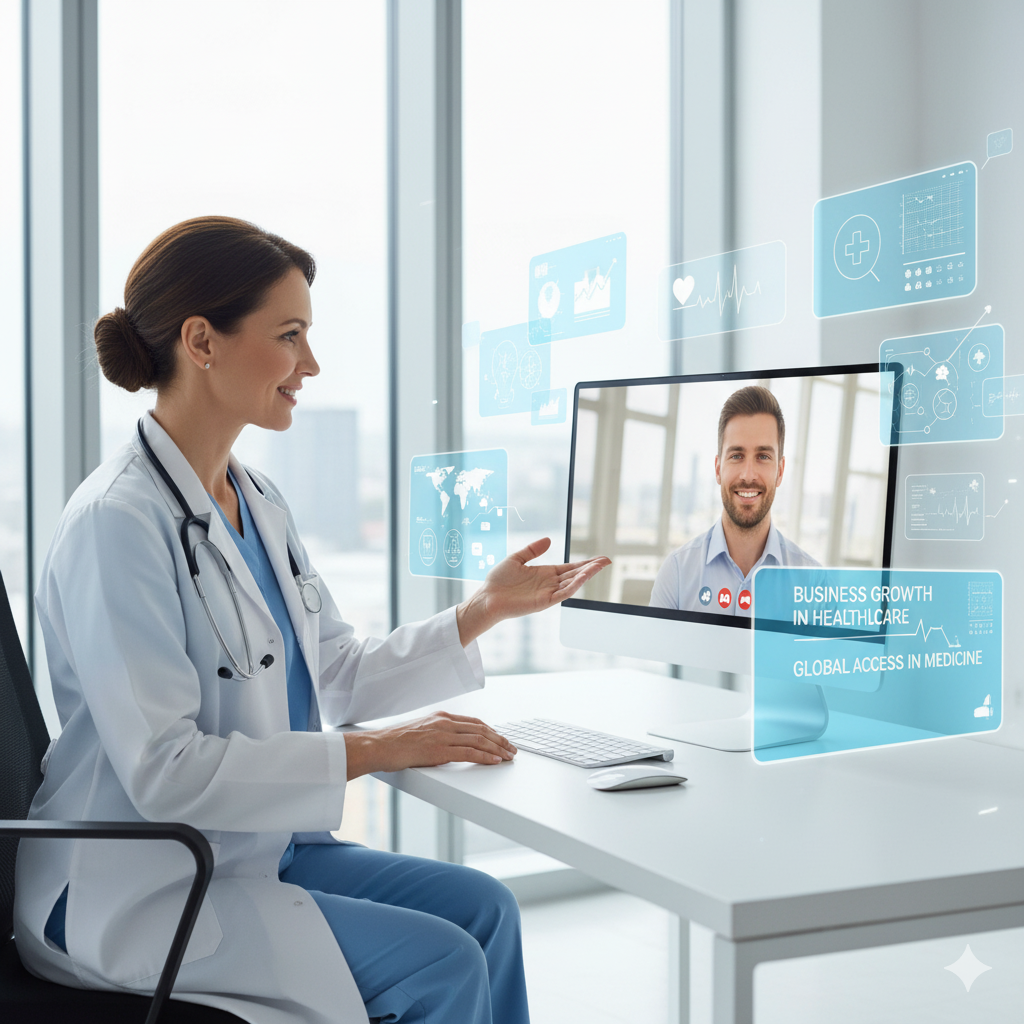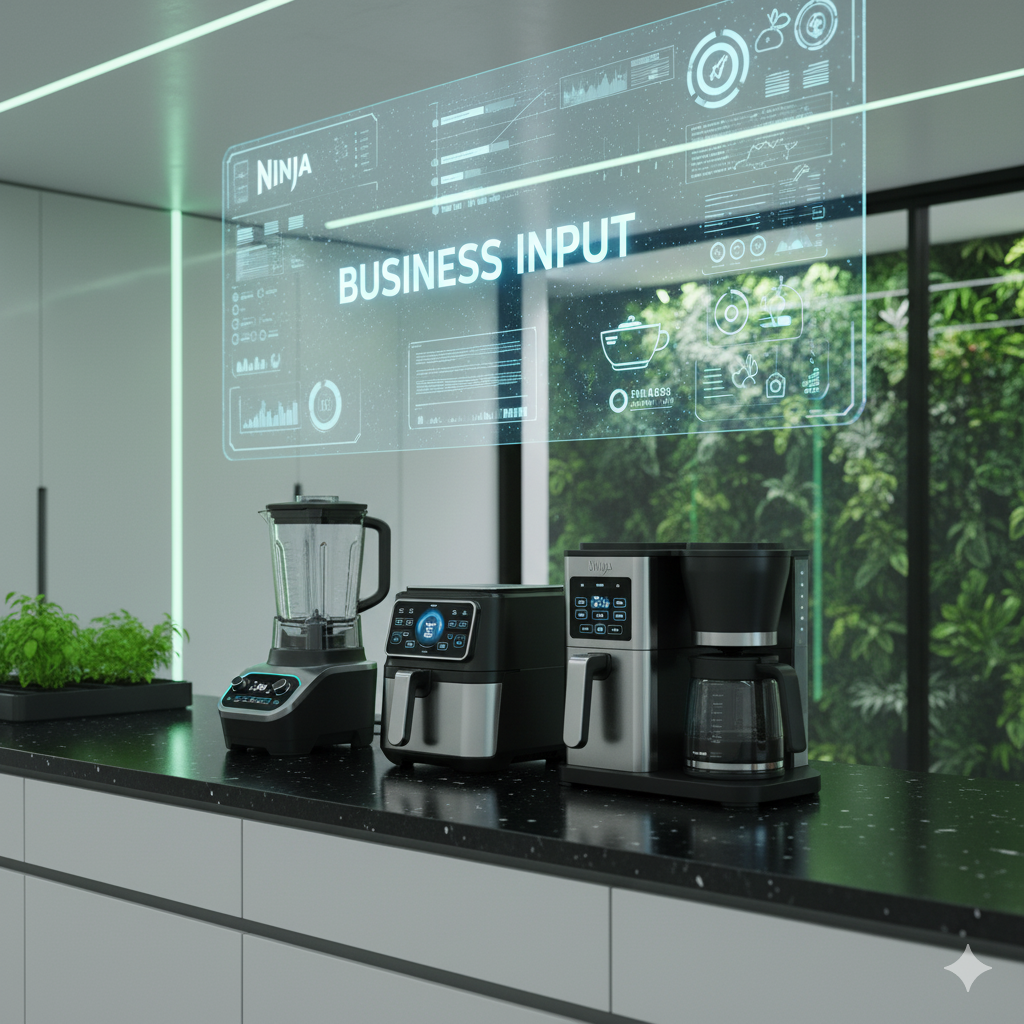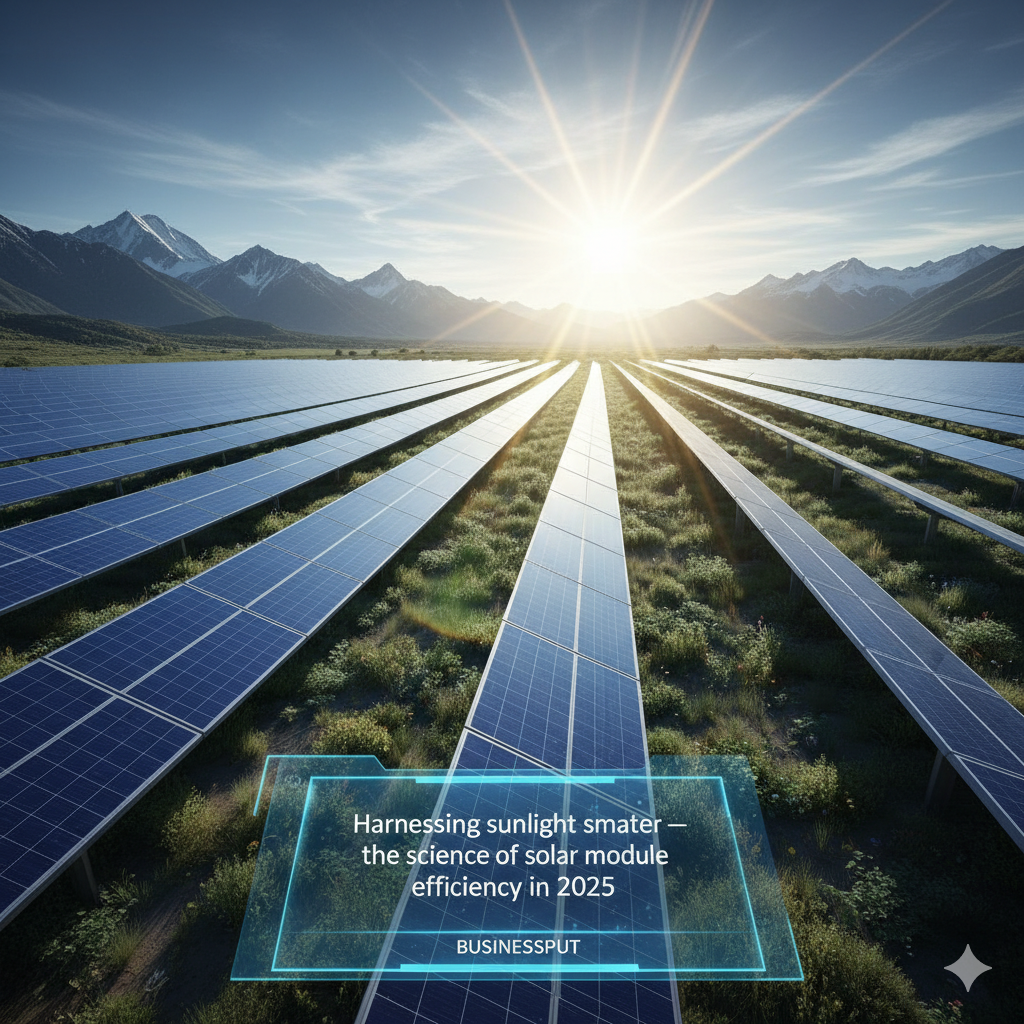🌐 Telemedicine: Revolutionizing Global Healthcare for a Connected World
🏥 What Is Telemedicine?
Imagine living in a world where you can get high-quality medical care without ever leaving your house, where you can get real-time tracking of your blood pressure, blood sugar, and heart rate, and where travel and distance are no longer obstacles. Thanks to telemedicine, that world is happening right now, not in the future.
The term “telemedicine” describes the practice of providing medical care remotely via digital technology. It makes it possible for medical professionals to interact with patients through wearable technology, mobile apps, secure chat platforms, and video calls.
This is a global healthcare revolution, not just a convenience. By removing obstacles like location, mobility, or restricted access to medical specialists, telemedicine makes healthcare more accessible and effective than it has ever been.
🌍 Why Telemedicine Matters Globally
Access was a problem that millions of people worldwide faced prior to the emergence of telemedicine.
There were no experts in rural areas.
For checkups, patients had to travel great distances.
Hospitals in cities were overcrowded.
The cost of medical care was high.
Digital transformation followed. 🌐
Our living rooms became the doctor’s office thanks to telemedicine. It provided a fresh approach to care, one that blends technology and trust, convenience and compassion.
These days, you can get in touch with a trained healthcare provider right away, regardless of where you are—in a small European town, a busy Asian metropolis, or a remote African village.
💻 How Telemedicine Works: The Digital Healthcare Ecosystem
The telemedicine system integrates several digital tools to make healthcare delivery smooth, safe, and effective. Here’s how the ecosystem works:

🩺 1. Video Consultations
Doctors and patients connect via secure video platforms. The consultation works much like a face-to-face appointment — patients describe symptoms, show visible conditions, and receive guidance or prescriptions in real time.
📲 2. Mobile Health Apps
Apps such as Teladoc, Doctor on Demand, and HealthTap (globally used) allow patients to schedule appointments, store medical records, and even receive digital prescriptions.
These apps also feature AI-powered symptom checkers that help patients understand potential issues before seeing a doctor.
🧠 3. Remote Monitoring Devices
Smart medical gadgets — like digital blood pressure monitors, glucose meters, or wearable ECG sensors — collect live data and transmit it directly to healthcare professionals. This allows continuous observation of patients with chronic conditions like hypertension, diabetes, or heart disease.
💾 4. Electronic Health Records (EHRs)
EHRs are digital versions of patient files. They store history, prescriptions, and test results securely, enabling any authorized doctor worldwide to access and update them instantly.
This data continuity helps ensure better coordination among doctors, labs, and pharmacies.
🌐 5. AI and Data Analytics
By identifying trends in patient data, forecasting risks, and making treatment recommendations, artificial intelligence plays a vital role. Even before symptoms appear, AI can assist in identifying early indicators of mental health disorders, heart failure, and cancer.
🌟 Benefits of Telemedicine
The benefits of telemedicine stretch far beyond convenience. It’s reshaping the economics, accessibility, and philosophy of healthcare worldwide.
✅ 1. Breaking Geographical Barriers
In remote regions where hospitals or specialists are scarce, telemedicine is a lifeline. Patients in rural areas can now access the same quality care as those in major cities.
For example, a heart patient living in a mountain village can consult a top cardiologist in another country through a secure video platform — without traveling thousands of miles.
✅ 2. Cost-Effective for Everyone
Healthcare can be expensive, but telemedicine helps reduce:
Travel expenses
Hospital overheads
Missed workdays
Waiting time
Virtual consultations are often cheaper, and hospitals can allocate resources more efficiently.
For healthcare systems, telemedicine saves billions by reducing unnecessary hospital visits and admissions.
✅ 3. Convenience and Comfort
Telemedicine offers flexibility. Patients can book appointments from home, consult during work breaks, and even receive follow-up care while traveling.
It’s particularly beneficial for:
Elderly or disabled individuals
Busy professionals
Parents managing children
People living in extreme weather zones
No more crowded waiting rooms or long queues — healthcare fits into your life, not the other way around.
✅ 4. Real-Time Health Monitoring
Smart wearable devices continuously collect data on blood pressure, oxygen levels, or glucose readings. Doctors can access this data and make real-time decisions.
Imagine a diabetic patient wearing a glucose monitor — if their blood sugar spikes, the system alerts the doctor immediately. That’s not just convenient; it’s life-saving.
✅ 5. Enhanced Mental Health Support
Mental health care has seen massive improvement through teletherapy. People who once hesitated to seek counselling due to stigma can now talk to licensed therapists online.
It’s private, safe, and easily accessible. Platforms offering video therapy and chat sessions are helping millions cope with anxiety, depression, and trauma globally.
⚕️ Telemedicine During the COVID-19 Pandemic

The global pandemic was a turning point for telemedicine. As hospitals overflowed and physical visits became risky, digital healthcare became humanity’s safest option.
Telemedicine usage increased by over 400% in 2020.
Governments worldwide expanded digital healthcare policies.
Even specialists like dermatologists and physiotherapists moved online.
This period proved that telemedicine is not just an alternative — it’s essential. It kept patients connected to doctors, reduced virus exposure, and saved countless lives.
⚠️ Challenges Facing Telemedicine
Even though telemedicine has revolutionized healthcare, it’s not without challenges. Recognizing these is key to improving future systems.
🚧 1. The Digital Divide
Not everyone has access to high-speed internet, smartphones, or tech literacy. Rural and low-income communities may still struggle to use telemedicine effectively.
🔐 2. Data Privacy & Security
Medical information is extremely sensitive. With telemedicine relying on online data transmission, cybersecurity becomes crucial. Governments and healthcare providers must ensure systems comply with strict privacy standards.
👩⚕️ 3. Lack of Physical Examination
Some medical cases require direct physical assessment, testing, or touch-based evaluation — something virtual care can’t fully replicate.
🌍 4. Regulatory Differences
Countries have varying rules on online prescriptions, licensing, and cross-border consultations. A global framework is needed to streamline telehealth services safely.
💬 5. Human Connection
Some patients still prefer face-to-face interaction for comfort, emotional support, and trust. Balancing digital convenience with human empathy remains a challenge for virtual care.
🔬 The Role of AI and Advanced Technology in Telemedicine
Artificial Intelligence (AI) has become the brain behind modern telemedicine. Here’s how it enhances healthcare delivery:
🧠 AI-Powered Diagnostics
AI systems can scan thousands of medical images in seconds, detecting tumors, fractures, or infections faster than human eyes. This supports doctors in making more accurate diagnoses.
🤖 Chatbots and Virtual Health Assistants
AI chatbots provide 24/7 support — answering common health questions, guiding patients to the right specialists, and managing follow-ups.
📊 Predictive Analytics
By analyzing large datasets, AI predicts which patients might develop certain conditions. For example, algorithms can identify early signs of diabetes or heart failure based on lifestyle and genetic factors.
🔗 Integration with Wearables
Smartwatches and biosensors collect data continuously. AI processes it, identifying trends and alerting doctors to unusual changes.
The fusion of AI + Telemedicine is creating a world where healthcare becomes predictive, personalized, and preventive.
🌱 Environmental and Social Impact
Telemedicine also contributes to sustainability and social equality:
Fewer hospital visits mean less fuel use and lower carbon emissions.
It reduces pressure on overcrowded hospitals, improving service quality.
Women and people with disabilities benefit greatly by receiving care from home.
This makes telemedicine not only a medical innovation — but also a social and environmental one. 🌎💚
🚀 The Future of Telemedicine: A Global Vision
Telemedicine is still evolving — and the next decade promises even greater breakthroughs.
🏥 1. Rise of Virtual Hospitals
Hospitals are going digital. Virtual hospitals now provide 24/7 consultations, diagnostics, and pharmacy deliveries — all online. Patients can be monitored from home with hospital-grade precision.
🤝 2. Collaborative Global Healthcare
Telemedicine encourages international cooperation. Doctors from different countries can collaborate on complex cases using shared digital records and AI analysis.
🔮 3. Integration with Robotics
Remote robotic surgery, guided by specialists from across the world, is becoming a reality. Surgeons can operate robotic arms in one country while sitting in another.
🌐 4. Blockchain for Secure Health Data
Blockchain technology is being integrated to make patient records transparent yet tamper-proof, ensuring trust and privacy globally.
🧘 5. Focus on Holistic Health
Future telemedicine platforms will combine physical, mental, and emotional health support — offering fitness coaching, therapy, and nutrition advice in one place.
🌍 6. AI-Driven Global Health Networks
AI will soon connect hospitals, labs, and research centers across continents — creating a global health network where data flows securely and helps predict disease outbreaks before they spread.
🩺 Success Stories and Real-World Examples
India’s eSanjeevani platform enabled millions of free online consultations for rural citizens.
Sweden’s Kry and Germany’s TeleClinic are leading Europe’s telehealth revolution.
US-based Teladoc serves over 80 million members with virtual care.
African startups like mPharma are bringing affordable telemedicine to developing regions.
These examples show one clear truth: telemedicine isn’t just a Western luxury — it’s a global equalizer in healthcare access.
💬 The Human Side of Telemedicine
Behind every technology, there’s a human story. Telemedicine has allowed:
A mother in a remote area to get her child checked by a pediatrician in minutes.
A senior citizen to monitor their heart health without traveling.
A mental health patient to receive therapy safely from home.
It’s not just innovation — it’s compassion delivered through technology. 💖
🌟 Conclusion: Healthcare Without Borders
Telemedicine has transformed healthcare into something truly global, inclusive, and intelligent.
It’s no longer about where you live — it’s about how easily you can connect.
From AI-powered diagnostics to virtual hospitals, the future of healthcare is not confined by walls, geography, or time zones. It’s digital, accessible, and deeply human.
As technology continues to evolve, one thing is clear — telemedicine isn’t replacing traditional healthcare; it’s enhancing it. It gives us the tools to make healthcare fairer, faster, and more personal — no matter who we are or where we live. 🌍💙
In a connected world, healthcare should never be out of reach. Telemedicine proves that innovation and empathy can work hand-in-hand — creating a healthier, more connected global community.




